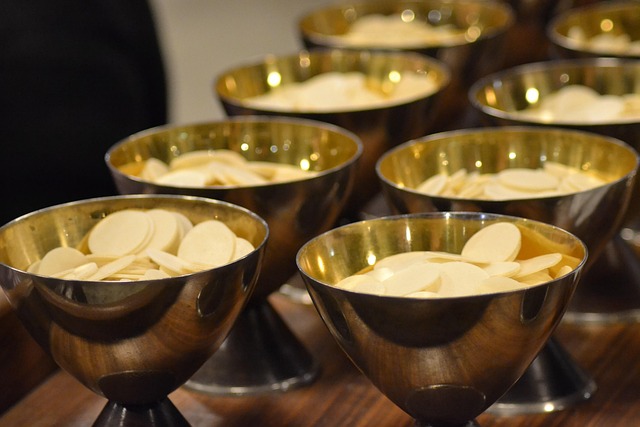The ciborium, a term derived from the Latin word ciborium,” is a revered object in various religious traditions, symbolizing both sustenance and sanctity. It typically refers to a covered container used to hold the consecrated hosts during a religious ceremony, particularly in Christian liturgies. However, its significance expands far beyond mere function; the ciborium represents a profound connection between the sacred and the everyday.
In Christianity, the ciborium is often crafted from precious metals and adorned with intricate designs, reflecting the deep reverence placed upon it. It serves as a reminder of the Last Supper, where Jesus shared bread with his disciples. This vessel transcends its physical form, embodying the spiritual nourishment believers seek. During Communion, as the ciborium is presented, it creates a moment of awe, inviting the faithful to partake in a ritual that has endured through centuries.
However, the significance of the ciborium is not limited to Christianity. In the context of other faiths, we see similar vessels that carry sacred elements. For example, in Judaism, the Ark of the Covenant—the ancient ciborium of the Hebrew Bible—contained the tablets of the Ten Commandments, serving as a powerful symbol of divine law and guidance. This connection between vessels and divine presence underscores a universal theme in spirituality: the desire to honor and safeguard the sacred.
The ciborium also serves as a reminder of the communal nature of faith. When it is placed at the altar, surrounded by the congregation, it signifies a shared belief, a collective journey towards spiritual fulfillment. The act of sharing bread and wine or other sacred elements from a specific vessel fosters bonds within the community, creating a sense of belonging and continuity. It connects generations, linking the past with the present, through the age-old tradition of gathering to celebrate faith.
Moreover, the artistry involved in crafting a ciborium is itself a reflection of devotion. Many artisans invest significant time and talent into designing these vessels, treating them as works of art that embody spirituality. Each detail, from the choice of materials to the engravings, speaks of dedication to both craft and faith, capturing the essence of what it means to hold the sacred in one’s hands.
In our modern world, where spiritual practices can sometimes feel disconnected from daily life, the ciborium stands as a bridge, drawing individuals back to their roots. It invites us to pause and reflect upon the divine amidst the chaos, reminding us of our shared humanity and the rituals that unite us. Whether in a grand cathedral or a small chapel, the presence of the ciborium evokes a sense of reverence and introspection, awakening the spirit within each individual.
Thus, the ciborium is much more than a vessel; it is a sacred symbol that embodies a multitude of meanings across various religious contexts. It reflects the interconnectedness of different faith traditions, the communal aspects of spirituality, and the beauty found in honoring sacred practices. As we explore the deep significance of this cherished object, we are reminded of the enduring power of tradition to inspire, unite, and nourish our souls.




